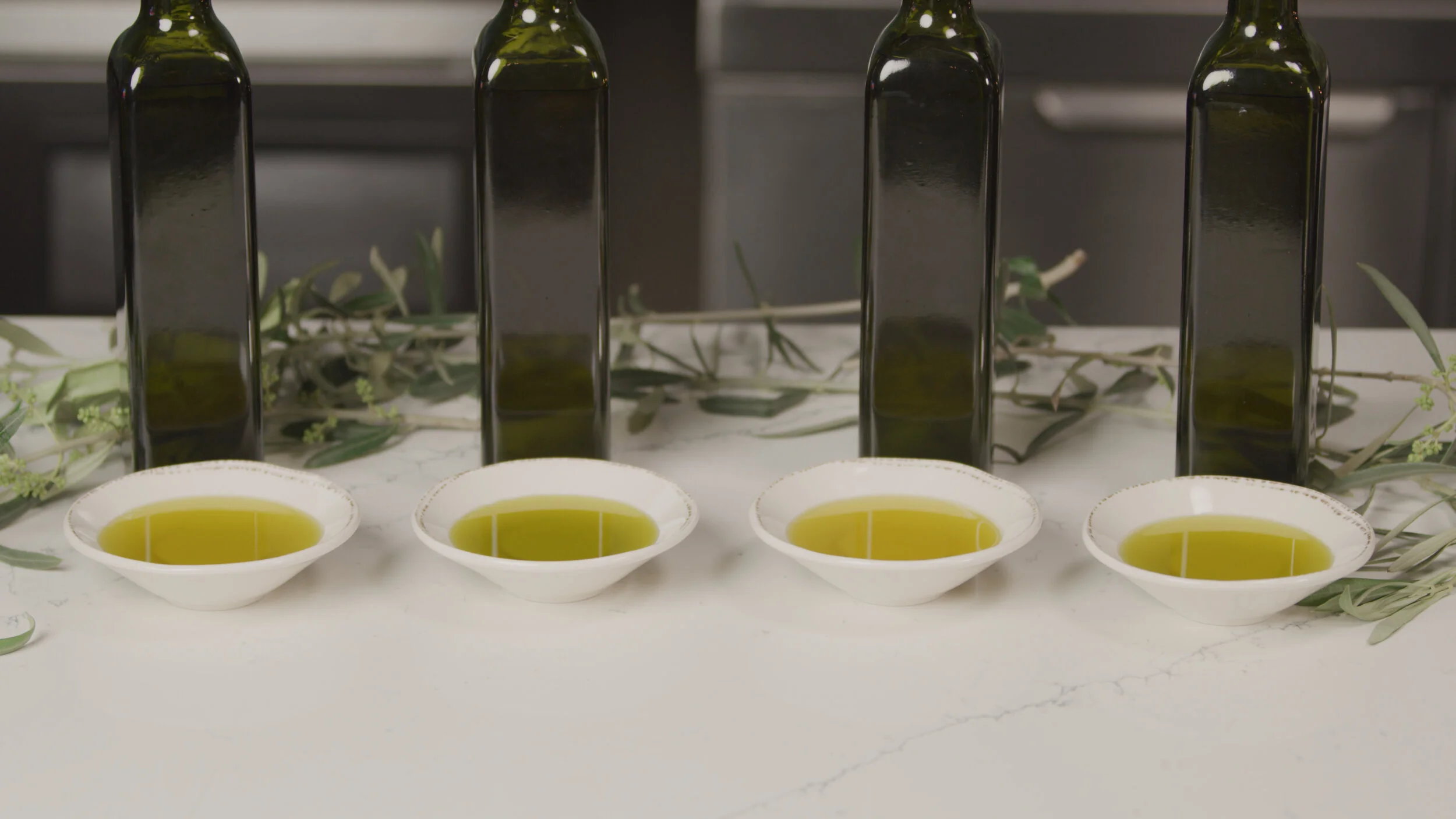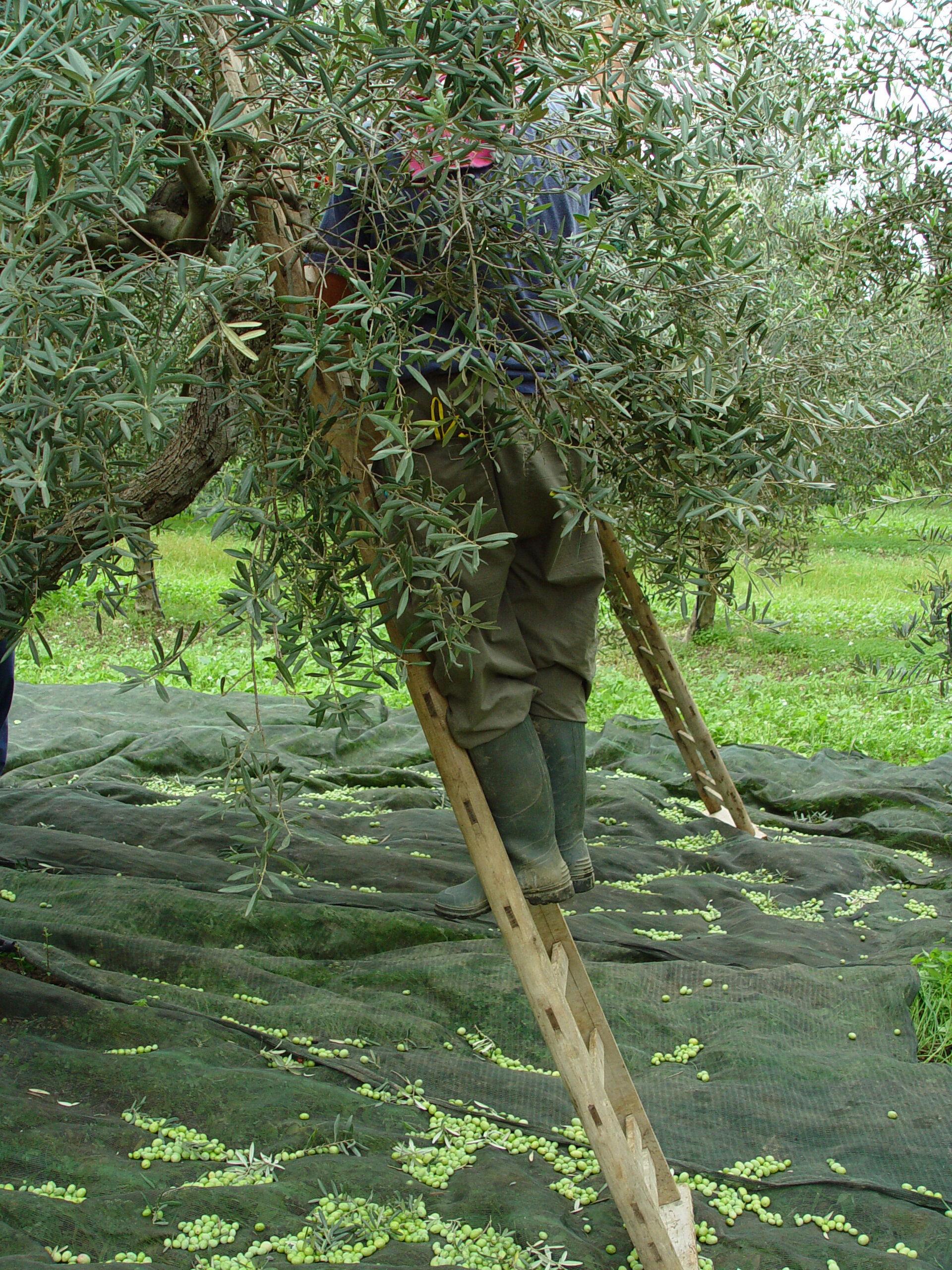Olive Oil Varietals and Flavors: There is a whole world of flavor in olive oil—full of varietals, styles, aromatics, and markers of excellence. Learn about the difference between extra virgin and regular olive oils, olive varietals, and olive oil flavor profiles.
As with the “world spice kitchen” and what we might call the “umami kitchen,” the Mediterranean-rooted “olive oil kitchen” has many layers of flavor, strategy, and techniques to offer today’s culinary and public health leaders as we seek to meet the public’s growing appetite for plant-forward meals.
The world of flavor in olive oil excellence is large and varied. Assuming that one has secured good olive oil quality as a baseline—and is not dealing with a rancid or otherwise compromised or inferior oil—chefs and cooks have a big “tool kit” to draw on with the many varietals and styles found across the Mediterranean region and in other olive oil-producing countries.
Olive oil varietals with their respective flavor profiles range from, for example, Hojiblanca and Picual in Spain, Coratina and Frantoio in Italy, Kalamata and Koroneiki in Greece, and Chemlali and Chetoui in Tunisia to Cobrancosa and Galega in Portugal, Lucques and Picholine in France, and Meslalla in Morocco. Olive oils can be made from a single varietal, such as Arbequina, or from blends of varietals, such as with the classic Tuscan blend of multiple olive varieties. Just as the world of wine invites us to sample grape varietals widely, the merit of exploring the wide spectrum of olive oil varietals holds strongly as well.
When olives are harvested makes a tremendous difference in flavor. Early harvested olives produce a green fruity flavor—typically with more intensity of flavor, including more or less bitterness and pungency. Olive oils that are harvested later—from the exact same varietals—will have more ripe fruit flavors, and will usually exhibit more rounded, milder, and more delicate flavors.
In competitive olive oil judging, again setting defects aside, one looks for the positive presence of green or ripe fruit and, as appropriate to the oil, bitterness and pungency (the latter creating the peppery sensation that sometimes makes one cough). Then the oils are evaluated in terms of complexity, harmony, balance, and persistence. As with good and great wine, excellent olive oils demonstrate a “whole that is greater than the sum of its parts” quality.
Through its prestigious, annual Mario Solinas Quality Awards program, the International Olive Council recognizes four categories of excellence:
Intense green fruitiness
Medium green fruitiness
Mild green fruitiness
Ripe fruitiness
But perhaps the real adventure with olive oil comes when one delves into the world of additional sensory and flavor attributes of extra virgin olive oils including such possible characteristics as fresh-cut grass, artichoke, tomato leaf, green apple, citrus, ripe fruit, buttery, and nutty. Some of these characteristics will be more fragile on the palate, and are best experienced in simpler culinary preparations where the oil is added in its raw, non-cooked state.
Spider plots, combining all of these elements and deployed by some of the world’s leading sensory scientists, create comprehensive sensory profiles that underscore just how much diversity exists in the olive oil world.
Armed with this background on olive oil varietals, styles, taste characteristics, and aromatics, one can explore the pairing strategies with food and extra virgin olive oils—just as one would with wine and food. One challenge quickly arises in pairing olive oils with foods that typically isn’t present with wine and food pairing: in the latter arena, all wines are crafted to be enjoyed on their own, and while they can be enjoyed with food they are not dependent on that experience. For most people, olive oil is not something that is eaten separately from food. Thus, for chefs and home cooks wanting to please their guests: if they (the guests) don’t have a high level of olive oil literacy and show aversion to the intense or medium green fruitiness attributes of bitterness, astringency, and pungency, they might not easily get beyond their initial negative reaction to such oils by themselves, let alone when incorporated into cooking and foods. In this case, the cook or chef needs to think about creating the perfect, engaging food pairings or experience(s) that blends various elements and that may lead to a sensory epiphany without first ending in avoidance or rejection.
Much of Western cooking and food experiences celebrate harmony and perfection in the blending of flavors (e.g., sauce-making in the French kitchen). While excellent olive oil can also play at this game (e.g., cod or hake in pil-pil sauce), the contrasting quality of intensely fruity and medium fruity olive oils when applied as a condiment to the appropriate foods just at the time of service—in the kitchen or at the table—can offer an equally appealing experience, one of complexity, surprise, and intrigue. The bitterness and peppery quality (the pungency) of some intensely fruity extra virgin olive oils when applied as a condiment to, say, a bean soup or a soft, fresh cheese offers yet another dimension—that of the “attack and decay” phenomenon one experiences when these previously separate, contrasting elements are slowly blended on the palette.
Sara Spinelli, in her article “Investigating the Culinary Use of Olive Oils” (Olive Oil Sensory Science, 2014) nicely frames up the unique contribution this class of extra virgin olive oils can make in “achieving this ‘struggle’ between sensory contrast and sensory balance, which is extremely important for the success of culinary preparation.”
In general, though, we don’t know enough about how to engage consumers in the world of olive oil, especially within the context of the substitution of olive oil (a healthy fat) for butter (an unhealthy fat) across multiple applications. But recent, important consumer and sensory research in this area has been done, and should be built upon. A good example of this is the 2018 doctoral thesis of Sara Kathy Yang (University of California, Davis), “Sensory and Culinary Strategies for a Shift to a Plant-Forward Diet: Can Extra Virgin Olive Oil Replace Butter?” This project was undertaken under the auspices of the Healthy Flavors Research Initiative, a joint initiative of the University of California, Davis (including the UC Davis Olive Center) and The Culinary Institute of America.





